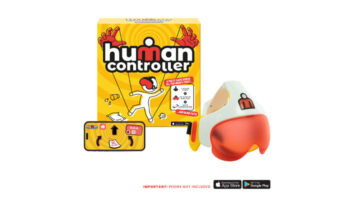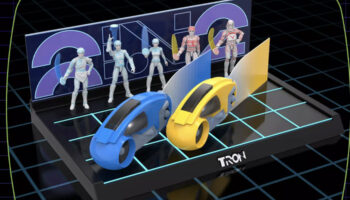GPI’s Top 10 Things To Know About… Pitching

1. Have a Prototype: The only way to know whether your concept is truly a game or toy, as opposed to just an idea, is by actually making it. Your prototype doesn’t need to be pretty or even have 100% of the content generated, but functionality is important. Even a Print & Play will be sufficient in some cases.
2. Take Advantage of Technology: Even though we just said your prototype doesn’t need to be pretty, there are so many great, free tools available to everyone that can improve the way your prototype is perceived – while saving you time to focus on the most important elements of the product. Keep any designs minimal so publishers do not get distracted by or stuck on the look of your prototype.
3. Make a Video: A pitch video is the most useful tool to present your game concept. Having one also means you don’t have to lug around prototypes or risk breaking them during – or on your way to – a pitch. You always get to show the best side of the game or toy, and it also makes it easier for Inventor Relations teams to pitch your game internally if they show any interest in your concepts. Write a script, record it as best you can, take videos and photos of your prototype in action, add a little music as long as it doesn’t distract from the product, and keep it short and sweet – less than two minutes per product. Don’t worry if it’s your first time making a video, no one expects Spielberg quality anyway. Most of the work can even be done on a cell phone. A few hours invested in making a video is well worth the effort.
4. Charge, Connect and Have a Backup: This may seem like an obvious recommendation but if you’re showing videos, make sure the device you’re showing them on is fully charged. If your presentation requires an internet connection, get there early and log in so you’re not spending the first couple mins trying to connect to WiFi. Better yet, assume you won’t have an internet connection and keep your videos saved locally. If you’re just flipping through a presentation, have a printed hard copy with you just in case. The same is true of any components that require batteries in physical prototypes.
5. Review Publisher Wishlists: If you are attending a pitch event, like the Mojo Pitch, companies will often provide a wishlist. Read this so you do not waste your own time pitching concepts that a company has already revealed they are not looking for. Sure, occasionally companies will see something outside their core requests that they want to take a closer look at, but it’s important to be aware of what they asked for in the first place.
6. Do Your Research: Be aware of what competing products exist on the market and how your games and toys differentiate themselves from existing products. This shows you have done your research ahead of time and gives publishers confidence in you as an inventor and in your game.
7. Dealing With Rejection: You will get a lot of “No’s”. Experienced inventors already know how often their games, even the really good ones, get rejected by publishers. Take this in stride. It’s never a personal thing, it just means that the game isn’t right for that publisher at that time. It could be that even just a few months into the future your game, which was rejected by everyone, might just be a hot commodity and publishers will be knocking on your door to see it again.
8. Follow Up: This probably should be #1 on the list because of how important it is. 90% of the pitch is actually in the follow-up. If you pitch games to a publisher and they ask you to send them rules or your videos or a prototype and they never receive it, you are doing yourself a disservice. They opened the door for you to show them the concepts they loved so much; step through it by building time into your day to send the email, assemble the print & play, get to the post office… Whatever it takes to get the game in front of the people that need to see it!
9. Incorporate Publisher Feedback: If the response to your pitch included any suggestions or changes from the Inventor Relations team, be sure to follow up with revised rules or an updated video showing how you incorporated their feedback into the product. This is a bit of a judgment call since you need to decide if the time investment from you is worth the potential reward. Recognising which suggestions are serious requests takes practice. If a publisher is serious about the change, you might be able to negotiate with them to financially support the work they want to see. Do not be afraid to ask.
10. Save Your Work: Trends can be cyclical in the toy and game industry; occasionally an idea you had years before might find a new opportunity somewhere you never expected. If you have old concepts that have not been pitched in a few years, give them a refresh. A theme adjustment, a makeover or an added feature can be the difference in getting it over the line this time around. Inventor Relations teams don’t turn over aggressively, so they will recognise favorite concepts from past pitches. Even if it wasn’t the right fit then, now could be the perfect time to launch the product. Plus, refreshing old concepts can give an exciting creative spark to set you off on a path of designing all new concepts for your next pitch.
–
To stay in the loop with the latest news, interviews and features from the world of toy and game design, sign up to our weekly newsletter here























